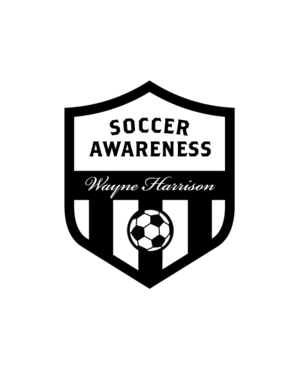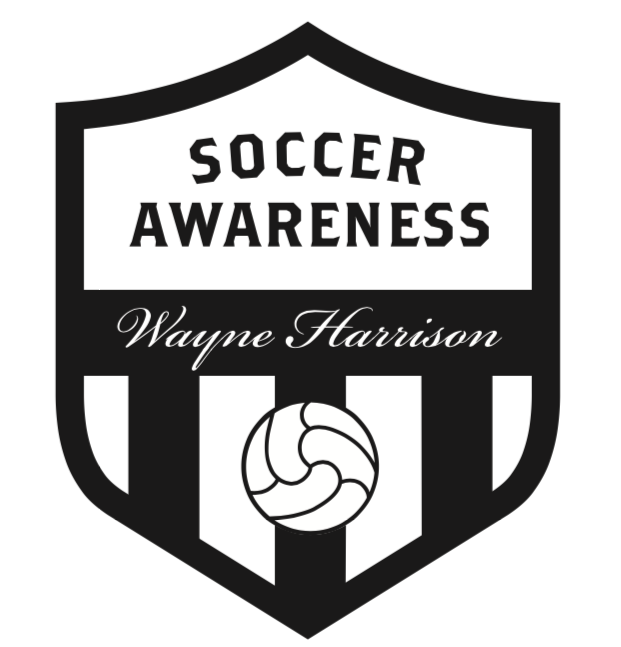Soccer Awareness: Basic Principles of Development (One Touch Play)
/This article is the intro to Wayne’s eBook 16: Soccer Awareness “One Touch” Training Developing its Relationship with Movement Off the Ball. Get the full book.
The Importance of Teaching One Touch Play: Improving One Touch Play
Maintaining an Awareness of What Is In Advance and Beyond the Ball
Linking foot preparation, body position and mental preparation to the technique involved in making a one touch pass leads us to a discussion on one touch play and its benefits.
One touch play teaches the value of being able to take your eye off the ball when keeping your eye on the ball can be a disadvantage.
To make this work, players need to have good teamwork and positional sense and therefore must work hard for each other.
A Gradual Training Introduction: Training the Psyche of the Players through One Touch Play
Introduce the training in a gradual way; don’t jump straight into a scrimmage. Set it up so it is easy to do initially. For example, one touch passing in two’s. Here, no great amount of awareness is needed because they are facing each other, but they must look into each other’s eyes and not at the ball. This is teaching them to get their heads up, and is the first most basic stage. It is also working on the pace and direction of the pass, getting foot sensitivity started in terms of that first touch on the ball that is now in effect a pass.
Then move to groups of three where a little more peripheral vision is needed. Then ask them to pass and move in a small area.
Next, add more players so there are more passing options and more awareness is needed. Now introduce the Numbers Game, passing in sequence; this really starts to introduce the awareness concept, but with one touch only.
Communication: Good communication is a must, so have players talk to each other, passing messages on to help each other all of the time.
Also, have them do this without any verbal communication as they then have to rely on themselves alone and in games. Unfortunately as much as we try, this very often happens anyway.
So do this WITH communication and WITHOUT communication. Even compare the two, some may get so good at this they can work it out for themselves most of the time as their peripheral vision improves.
So practice one touch with your team, then play games / scrimmages with your team and insist on it being ONE TOUCH ONLY.
There will be times when 2 touches are needed but do not allow it. Force the error if need be by insisting on one touch only.
Example: A player does not get his feet ready to receive and as a result does not make correct contact with the ball and possession is lost. Everyone can see that his feet were the problem, especially the player involved, and this will register in his mind for the next time.
Example: The ball is passed too heavily and quickly (pace and timing of the pass is wrong) and the receiver needs a touch to control the pass initially and then make a 2nd touch pass to keep possession. That is the passer’s fault, not the receiver’s; and they will learn that from this single pass. It is likely that a one touch play at this moment will not work, which is fine, because this will help them learn why it didn’t work for the next time.
Example: No teammates move to give the player receiving the ball an option to pass it one touch.
This is the fault of the player or players off the ball and not the receiving player, but you must insist it is passed one touch still so they pass it into the space the player should have moved into. Again, this will probably result in giving the ball away, but they will learn from that.
The players will recognize if possession was lost because there was not enough support off the ball, the pass was too heavy, or if it was the fault of the player’s first touch if there were options off the ball.
When you first do it, particularly in a competitive scrimmage situation whether within your own team training or against another team, you may find it is incredibly ugly play; the players will more than likely really struggle with it (or maybe not, they may surprise you).
And it may be ugly for quite a while; but just let it go.
Do not be disheartened and don’t let your players get discouraged. And do not coach, just let them play and work it out for themselves. Tell them you expect it to go wrong more than go right to relax them about it...
They will find with practice that they need to adjust the weight of the pass to help the next player, so foot sensitivity in passing will improve.
They will learn this through their own trial and error, not necessarily just what you tell them.
Get eBook 16: Soccer Awareness “One Touch” Training Developing its Relationship with Movement Off the Ball. This 103 page eBook explores one touch training and movement off the ball and includes 90 pages of drills that you can do with your team. Table of contents is below.
One Touch Training: Teaches the player WHEN to play one touch; and when NOT to play one touch. We are teaching players to have a ONE TOUCH MENTALITY. A One touch mentality teaches players to recognize the best options; and therefore make the best DECISIONS; BEFORE and in ADVANCE of receiving the ball.
Movement OFF the ball: This mentality conditions the mind of players OFF the ball to position and move to help the player who is receiving the ball. This means we want players to always; at every moment; THINK: “I only have One touch”; therefore this will force players to always do what I call the “LOOK and THINK” before they receive the ball to see several options and pick out their best option, which may actually be to DRIBBLE!!
When you use these training sessions consistently you will see the development of that relationship between having a ONE TOUCH mentality and Movement OFF the ball.
So in a nutshell:
LOOK (before receiving the ball);
MOVE (find space off the ball based on positioning of teammates and opponents):
THINK (what is my best option?):
EXECUTE (the Decision; or the SKILL Factor).














